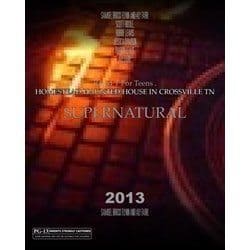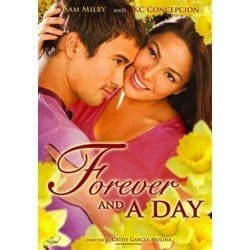Citizen Kane – The Greatest Movie of All Time?

The Studio
George J. Schaefer was 50 when he became head of RKO, ( Radio Keith Orpheum,) and his philosophy was to create a prestigious studio. Schaefer removed Producer Pandro S. Berman of Astaire-Rogers fame, and took total control for himself. Supremely confident, Schaefer looked for new artists and directors who could help him raise RKO’s erratic fortunes to rival the big studios. It was as an actor that Schaefer approached Welles; Welles wanted to direct…

The Director
The resulting publicity resulted in Welles being signed in July 1939 by George Schaefer to a two-year, two-picture contract, with Welles being given complete control over his productions provided RKO the script was approved and the picture stayed on budget.

The Scriptwriter

The Cinematographer
At 27, Gregg Toland was the youngest first-unit cameraman in Hollywood. He built a reputation which was so great that other studios hired him away from his home studio of MGM. Toland’s fame was due to innovative lighting techniques and the novelty of deep-focus photography. Toland once said, “I want to work with someone who’s never made a movie. That’s the only way to learn anything – from someone who doesn’t know anything.” On hearing of Orson Welles’ deal with RKO, Toland offered his services – and was given the freedom to experiment on Kane, using coated lenses and arc lights to create a hitherto unknown depth of focus. The Mitchell BNC camera was adapted with one of Tolland’s innovative anti-noise devices to reduce camera sound, enabling Welles to create long, continuous shots.

The Tycoon

Citizen Kane (70th Anniversary Edition) Blu-Ray
Citizen Kane (70th Anniversary Edition)
The Background to the Movie
Not everybody welcomed Welles. Actor Gene Lockhart penned a parody of Little Orphan Annie:
Little Orson Annie’s come to our house to play,
An’ josh the motion pitchers up an’ skeer the stars away
An’ shoo the Laughtons off the lot an’ build the sets an’ sweep
An’ wind the film an’ write the talk an’ earn her board-an’-keep
An’ all us other actors, when our pitchur work is done,
We set around the Derby bar an’ has the mostest fun,
A-list’nin’ to the me-tales ‘at Annie tells about,
An’ the Gobblewelles ‘ll git YOU
Ef you DON’T WATCH OUT!
After several projects (among them an adaptation of Joseph Conrad’s “Heart of Darkness”) fell by the wayside, the 25 year-old Welles made what is generally described as the most stunning debut in the history of film. Initially called “American” and later retitled “Citizen Kane,”
Welles decided that he would play the lead in an original story by Herman Mankiewicz and himself. Despite the risks involved, Schaefer stood by Welles and turned over the resources of his studio to him.
Cast
Joseph Cotten ……. Jedediah Leland
Dorothy Comingore … Susan Alexander Kane
Agnes Moorehead ….. Mary Kane
Ruth Warrick …….. Emily Monroe Norton Kane
Ray Collins ……… James W. Gettys
Erskine Sanford ….. Herbert Carter
Everett Sloane …… Mr. Bernstein
William Alland …… Jerry Thompson
Paul Stewart …….. Raymond
George Coulouris …. Walter Parks Thatcher
The Plot
Despite Thompson’s interviews, he is unable to solve the mystery and concludes that “Rosebud” will forever remain an enigma. At that point, the camera pans over workers burning some of Kane’s many possessions. One throws an old sled into the furnace – the same sled that Kane was riding as a child the day his mother sent him away. The word “Rosebud” painted on the sled burns as the camera closes in on it in the furnace. There is a shot of a chimney with black smoke coming out. For the viewer this solves the “Rosebud” mystery, the sled is a token of the only time in his life when he was poor; but it also represents the only time in his life when he was truly happy and wanted for nothing.
Production
Cinematography
Deep Focus
Until the late 1930s, films were shot in soft-focus because low-wattage lamps and slow film meant a shallow depth of field. With the advent of efficient lighting, faster film, and coated lenses, achievable depth of field covered twenty inches to near infinity.
Visible Ceilings
Most sets used ceiling area for lights and microphones, out of shot. Welles wanted extreme low-angle perspectives, so ceilings of muslin as used in the party scene allowed microphones to pick up live sound.
Angles
Low angles allow the characters to dominate and tower over others, as Kane does to Susan, but are themselves ‘hemmed in’ by ceilings. Because the camera needed to be lower than the floor, Welles cut huge holes in the boards.
Miniatures
During the gubernatorial rally, Kane and others on the stage are real. The audience is a miniature, with holes cut to allow flickering lights suggesting movement.
Flyaway
The El Rancho sign is a flyaway set, built in two sections to allow the camera through; the cut is masked by a flash of lightning. Lighting Lighting is from behind and with high contrast, isolating the actors.
Invisible Wipes
As Susan sings at her opera debut, the camera tracks to a catwalk high above the stage. Stage curtains invisibly wipe in miniatures; they are wiped out again by a wooden beam.
Editing
Editing determines pace and rhythm: few close-ups and long takes emphasise character and relationship rather than verbal interaction.
Optical Printer
Where deep focus was impossible due to complexity of scenes, an optical printer combined separate shots into one. (Gettys observing the rally combined four shots, Leland watching Kane write Susan’s review combined two.) It was also used to accomplish the transition of Susan’s actual front door into the newspaper photograph, and the composite shots depicting Susan’s attempted suicide.
Optical illusions
The Great Hall and in particular the fireplace in Xanadu was built on a huge scale so as to dwarf Kane and Susan.
Citizen Kane is a cinematic encyclopaedia; a shop-window display of artistry.
Was Kane modelled on Hearst?
Welles claimed the Hearst parody was his idea; others claimed Mankiewicz toyed with it for years. (His screenplays were often about newspapers and publishing.) Both may have been right; an early Preston Sturges film ‘The Power and the Glory’ starring Spencer Tracy, told the story of a tycoon also loosely based on Hearst. It is not inconceivable that several people may have had plans to film variants on his life story; he was, after all, a very influential figure, and Hollywood loved the influential. Welles may have anticipated trouble with Hearst – at the start of the film, a reporter asks “How does Kane differ from other famous newspaper magnates like Hearst, or Pulitzer?” Despite this misdirection, the parallels with Kane are unavoidable. Both were newspaper magnates, both inherited money, both built huge baronial estates, both had mistresses whose careers they tried to assist, (although it is highly unlikely that the character of Susan Alexander was actually based on Marion Davies; there were far closer parallels with Gladys, wife of Chicago tycoon Samuel Insull, for whom he actually built an opera house: Mankiewicz actually wrote a newspaper review of her performance in ‘School For Scandal’ in 1925 and the Kane review very closely echoes this), both spent money on collections which were largely unseen – even the name ‘Rosebud’ was Hearst’s private nickname for Marion Davies – the list goes on. Hearst is reputed to have responded to a journalist’s query: “You furnish the pictures and I’ll furnish the war.” Kane states, “You provide the prose poems, I’ll provide the war.” Hearst denied ever saying it, the quote is from an article by James Creelman published much later. Hedda Hopper, an infamous columnist for Hearst’s paper, wrote a review of Citizen Kane; she reported it as a “vicious and irresponsible attack on a great man.” Hearst began a campaign against Welles. He had men shadow Welles; Welles had to hire bodyguards to watch over him. Hearst’s newspapers libeled him daily; Suggestions of communism even prompted an FBI investigation. Finally Hearst tried other tactics. After an unsuccessful lawsuit, he declared an advertising ban on any movie theater which showed the film. He even paid movie theaters not to show Citizen Kane. Welles reaction was characteristic: “Show it in tents outside the theaters. It will make millions: ‘the film they don’t want you to see!” Although some theaters accepted the bribe and found ways to show the movie anyway, Citizen Kane did not get the screening it deserved. Citizen Kane did not premiere until May 1, 1941. Studio heads worried about Hearst’s threats to reveal the extent of Jewish influence in Hollywood. Schaeffer was offered $800,000 by MGM to destroy the negatives and prints. He refused and the Hearst press launched a vitriolic campaign against RKO. Schaeffer countered with “private” screenings of the film for a selection of influential journalists, producers and directors. Their enthusiasm and the publicity of non-Hearst newspapers ensured Citizen Kane’s release. Hearst’s influence even extended to the Academy Awards; reportedly, he paid hundreds of people to shift the vote away from Citizen Kane. This certainly harmed Kane, as out of a total of nine nominations, Welles only received an Oscar for Best Original Screenplay, which he shared with Mankiewicz; ironically because of Mankiewicz’s friendship with Hearst. Welles was even booed when he accepted the award. However, the real loser was Hearst himself. His debts would amount to nearly 18 million dollars. Why did Hearst react the way he did? He had often been criticized before about his checkbook journalism and had not responded in this way. Perhaps the aging Hearst thought he deserved more respect and wanted to put down the new upstart kid. Citizen Kane enjoyed some success in large cities, but in urban areas it gained the reputation of being ‘box-office poison.’ It was considered too dark, gloomy, and intellectual for mass audiences. Citizen Kane initially lost $160,000. After a year, RKO shelved the film, believing that it would never be a financial success. RKO’s attitude to its own picture extended to its stationery which later read ”Showmanship instead of Genius.” Even the original negative of Citizen Kane was burnt in suspicious circumstances, although the duplicate survived. It was only with the 1956 re-release that the real acclaim for the film began to build, and Welles’ shares earn him a profit.
Afterword
Books on Citizen Kane
Citizen Kane Movie Poster 24in x36in
Citizen Kane Movie Poster 24in x36in
Citizen Kane Horizontal Orson Welles Movie Poster
Citizen Kane Horizontal Orson Welles Movie Poster
All offers for Rosebud, Citizen Kane Apron Apron by CafePress
Rosebud, Citizen Kane Apron Apron by CafePress
Citizen Kane Orson Welles Apple RUBBER iPhone 4 or 4s Case
Citizen Kane Orson Welles Apple RUBBER iPhone 4 or 4s Case
RKO 281 – The Battle Over Citizen Kane (1999)
RKO 281 – The Battle Over Citizen Kane (1999)
Citizen Kane on Amazon UK










